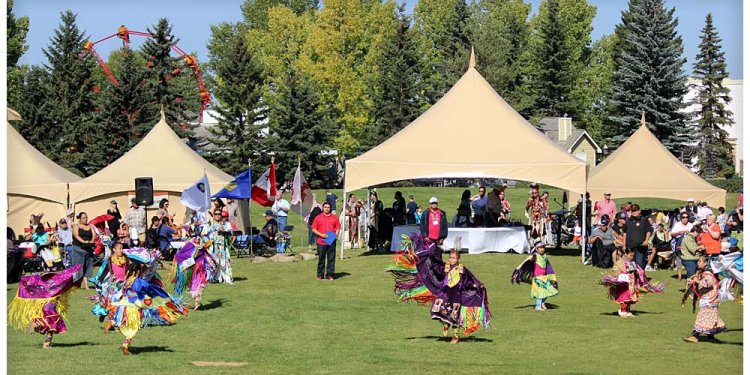
Inuit origins
The Inuit are the aboriginal inhabitants associated with North American Arctic, from Bering Strait to East Greenland, a length of over 6000 kilometres. In addition to Arctic Canada, Inuit additionally live-in northern Alaska and Greenland, and possess close family relations in Russia. They've been united by a typical social history and a common language. Until recently, outsiders called the Inuit "Eskimo." Now they prefer unique term, "Inuit, " meaning merely "people." There are about 40, 000 Inuit in Canada.
Inuit Beginnings
Based on archaeological research, the origins of this Inuit lie in north-western Alaska. These first Alaskan Inuit lived on the seacoast and tundra, in which they hunted seals, walrus, whales, and caribou. They lived in homes manufactured from driftwood and sod, and probably talked an earlier form of the Inuit language, Inuktitut. They and their forefathers were initial Arctic visitors to be expert at searching the larger sea mammals, for instance the bowhead whale. The big level of meals that resulted from a successful hunt—even a little whale could weigh seven tonnes-meant that their particular life style ended up being richer and more secure than that a great many other hunting men and women.
The Inuit Move East
Beginning about 1000 years ago, these early Inuit started to distribute east into Arctic Canada. Within a few hundred many years, they had replaced the sooner inhabitants of the area, a now-extinct people known to the Inuit as Tunit. This Inuit migration was not an individual mass event, but probably involved dozens of small parties of perhaps 20 or 30 people moving east searching for an improved life.
A specific goal seemingly have already been the rich whaling grounds around Baffin and Somerset countries. Here they quickly replicated the large whaling villages and successful life-style they had left behind in Alaska. Various other groups settled in coastal areas without rich whale resources, in which they lived-in smaller villages and depended mostly upon seals, caribou and fish. Every where they moved, Inuit pioneers introduced together the heavy sod cold temperatures homes and sophisticated looking technology of these Alaskan forefathers.
The Inuit and the Vikings
By about AD1250, the initial Inuit had registered Greenland through Smith Sound location within the far northwest associated with area. Here, possibly in the Canadian side, they first encountered medieval Norse ("Viking") hunters from the Norse colonies in southwest Greenland created by Eric the Red. Eventually these Norse colonies vanished, probably inside middle 1400s. There are different concepts about their particular disappearance, but a deteriorating environment had been one explanation. Competitors aided by the Inuit, who were definitely better adjusted to Arctic life compared to the Norse, might also have now been one factor. Once of later European exploration within the 16th century, the Inuit had been in single control of this whole united states Arctic.
A Colder Climate
The exact same worsening climate that spelled the termination of the Norse colonies in Greenland in addition put serious strains on the Inuit economic climate. After about 1300, conditions became increasingly colder culminating in a so-called minimal Ice Age around 1500. Rich and important whaling places into the tall Arctic were abandoned and people shifted southward.
Bowhead whaling as focus of Inuit life disappeared from most of Canada and Greenland (while not Alaska). Life usually became more difficult and more hand-to-mouth. People moved their particular camps and villages more often, and, in many places, the old sod and whalebone winter-house ended up being abandoned in favour of homes made from blocks of snowfall. These people were simpler to build as they could possibly be set up everywhere, also from the ocean ice, and needed only a couple of hours to make.
Contact with Explorers
Connection with European explorers in addition introduced changes. Between the voyages of Martin Frobisher within the 1570s additionally the find the lacking Franklin expedition in 1850s, a large number of expeditions toward Arctic put sail, often from England. A lot of them had been searching for a Northwest passageway from the Atlantic toward Pacific.
To start with, Europeans failed to understand Arctic as somewhere of value itself, but as a barrier preventing their solution to the fortunes beyond. Throughout their trips through the North, European explorers frequently found Inuit. Couple of Europeans were unprejudiced enough to believe they'd anything to learn from the Inuit, however they did trade and exchange gifts. The Inuit started initially to learn about the outside globe and appreciate just what it needed to provide. The Europeans brought all of them iron, which they valued in making resources such as harpoon points and knife blades.
The Whalers
Into the 1850s, Europeans and Americans started initially to appreciate the commercial value of the Arctic's pet sources. The North Atlantic commercial whaling industry, running off Britain and New The united kingdomt, began large-scale businesses with what are now actually Canadian waters, in which they killed huge number of whales. They hired countless Inuit be effective on the vessels as hunters and seamstresses. A big range and level of made products joined Inuit society, everything from rifles and tent fabric to whale boats and flour.
At the same time, the Pacific whalers, based in bay area, had been expanding north through Bering Strait after which east over the Alaskan coastline toward Mackenzie River. By 1890, these people were more successful at Herschel Island. Because of the considerably longer distances involved, the Pacific whalers consistently remained over the wintertime. The teams as much as 15 ships in a season became taking part in local Inuit life.
Illness
And manufactured products, the whalers brought infectious diseases. The Inuit had no natural immunities to these diseases and hundreds, also thousands, passed away. The people of western Canadian Arctic Inuit (called Inuvialuit) fell from an estimated 2000 to 2500 folks in 1850, to 150 individuals in 1910.
When you look at the East, the results of condition were even more sporadic. One local group, the Sadlirmiut of Southampton Island, vanished entirely during the cold winter of 1902-03. They caught dysentery, a severe illness, from sailors on the Scottish whaling ship Active
.The Hudson's Bay Company, the authorities, as well as the Church
By 1905, the whaling business had been dying as Arctic whale shares virtually entirely collapsed. Additionally, brand-new inventions, particularly a synthetic replacement for baleen, caused whalers to make with other livelihoods, such as the fur trade. The Hudson's Bay business as well as other trading issues also started to just take an active fascination with the north fur trade. When you look at the 10 years after the First World War (1914-1918), the commercial fur trade relocated north to encompass the whole Arctic. Using fur trade emerged the Royal Canadian Mounted Police and Anglican and Roman Catholic churches.
By 1925, the Inuit had become topics or even quite citizens of this Canadian condition. In missionaries, numerous conventional beliefs and practices associated with Inuit vanished or moved underground. The Inuit destroyed energy over their lives in the early twentieth-century. Numerous slipped into deep impoverishment due to variations in fur rates occur distant London or ny.
See also:
- How to 1win play

















